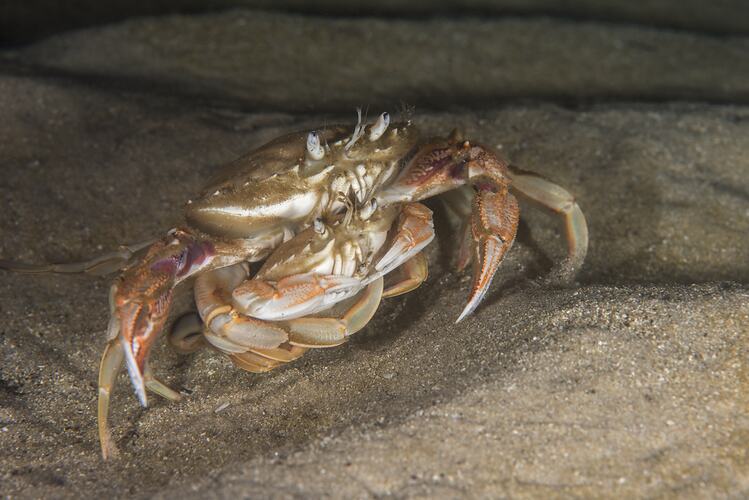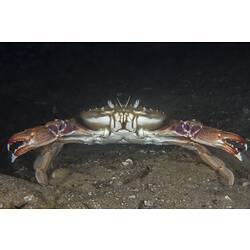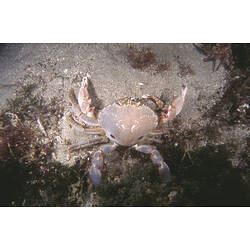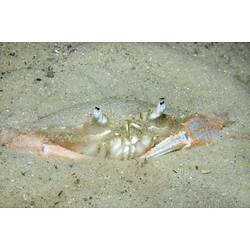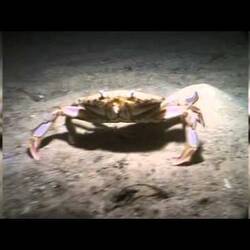General Description
Carapace pale brown to blue-grey, about as wide as long. The rear legs end with a flat rounded paddle. They have a pair of large blood-red to mauve grey 'eye' spots toward the rear of the carapace. Up to 11 cm wide (carapace).
Biology
Sand Crabs are particularly agile, being able to bury rapidly into the sand by digging backwards when disturbed, leaving only their stalked eyes poking up into the water above. Fisherman find Ovalipes a nuisance because they bite their bare feet in shallow waters, and expertly remove bait from their fishing hooks. They are usually active at night.
Distribution
Southern Australia.
Habitat
Sand areas and beaches, to depth of 100 m.
More Information
-
Animal Type
-
Animal SubType
-
Brief Id
Body dark sandy or blue-grey with two distinctive 'eye' spots near the back. Fourth legs flattened and paddle-shaped.
-
Colours
Brown, Blue, Grey
-
Habitats
-
Diet
Carnivore
-
Diet Categories
Animal matter
-
Endemicity
-
Commercial
Yes
-
Conservation Statuses
CITES: Not listed, FFG Threatened List: Not listed, EPBC Act 1999: Not listed, IUCN Red List: Not listed
-
Depths
Deep ( > 30 m)
-
Water Column Locations
On or near seafloor
-
Taxon Name
-
Scientific Author
Stephenson & Rees, 1968
-
Common Name
Sand Crab
-
Phylum
-
Subphylum
-
Superclass
-
Class
-
Subclass
-
Superorder
-
Order
-
Suborder
-
Infraorder
-
Family
-
Subfamily
-
Genus
-
Species Name
australiensis
